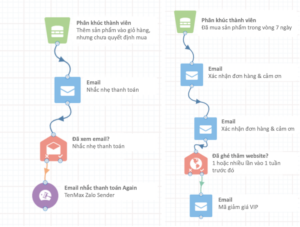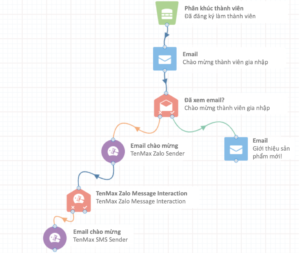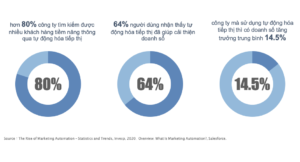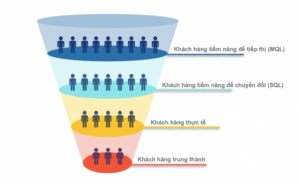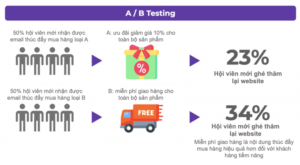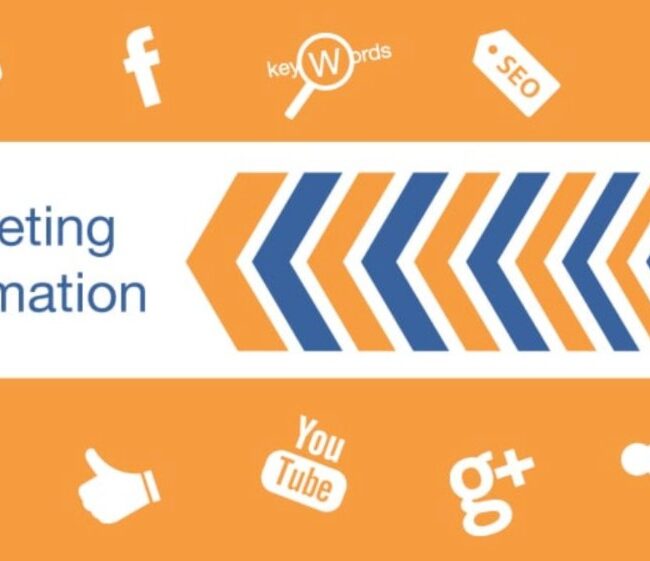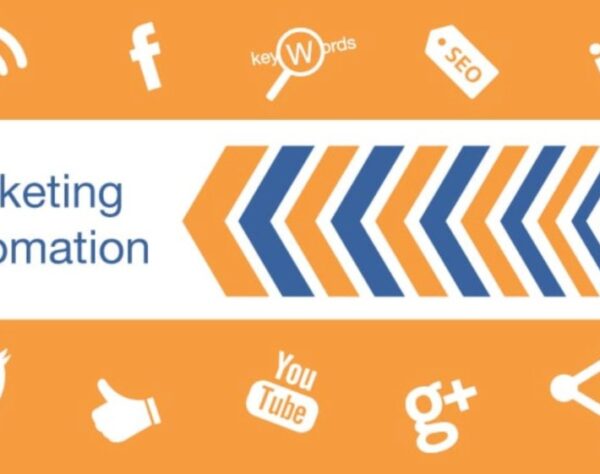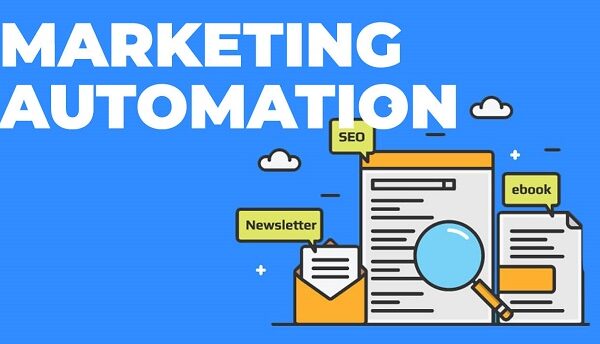
5 Minutes to Learn About Marketing Automation
1. What is Marketing Automation?
According to Oracle, marketing automation is software that supports marketing teams in planning, coordinating, and managing marketing activities across various platforms, while also allowing them to quantify, track, evaluate, and optimize the effectiveness of these activities.
The core functionality of marketing automation is to reduce or even eliminate repetitive tasks, such as:
– Sending email newsletters (EDM)
– Automating conversations through chatbots
– Publishing content across various social media platforms
– Adjusting advertising strategies based on campaign performance
– Automatically collecting and integrating data from various marketing platforms
Additionally, a good marketing automation tool will utilize the company’s own customer list, combined with tracking data, to segment customer groups, allowing for the establishment of channels, timing, and tailored messages for different groups.
For example, when a marketing automation tool helps send EDM, it also collects data such as open rates and click rates. It uses this data to optimize the best sending times, even evaluating the best sending times for each audience. Marketing automation tools also assist in lead development, evaluating and tracking customer behavior, and using customer feedback to perform different actions.
The automation described above involves two aspects:
– Content automation: The content varies depending on the target audience.
– Channel automation: Different channels are used to reach different audiences, such as SMS, email, and so on.
What do “content automation” and “channel automation” mean?
For example, if an online fashion brand uses marketing automation tools, and 10 customers have visited the brand’s website and registered as members during this time, the marketing automation tool will send welcome emails to these new members, and they may engage in the following behaviors:
1. Not opening the email;
2. Opening the email but taking no further action;
3. Whether they open the email or not, they revisit the website and add products to the cart;
4. Whether they open the email or not, they revisit the website and complete a purchase.
Based on the behavior of the audiences mentioned above, the marketing automation tool will send different content—content automation. For example:
– For behavior (2), send an email introducing new products;
– For behavior (3), send an email reminding them to complete their purchase;
– For behavior (4), send an order confirmation email with a thank-you note, and if the person revisits the website within 7 days, send a VIP discount code.
When targeting the same type of audience, using multiple channels to deliver messages multiple times—channel automation. For example, for someone who hasn’t opened the email (1), you could use a messaging app like Zalo to send them a message. If they still don’t read the Zalo message, you could follow up with an SMS.
The ultimate goal of marketing automation is to shorten the consumer purchase cycle, provide effective and uninterrupted stimuli during the decision-making process in the online shopping journey, and ensure that “the right person receives the right content at the right time,” gradually turning potential customers into brand advocates.
In this process, marketing automation tools will tag customers as either:
– Sales Qualified Lead (SQL): potential customers with high purchase intent.
– Marketing Qualified Lead (MQL): potential customers identified for marketing.
These tags help send different messages to different groups of potential customers, thus effectively converting them into buyers.
2. What are the benefits of marketing automation?
– Reducing human errors that may occur in marketing activities;
– Saving money, time, and marketing personnel resources;
– Maximizing ROI and operational efficiency;
– Developing potential customers;
– Enhancing retention and loyalty of existing customers.
According to a report by Invesp, over 80% of companies find more potential customers through marketing automation; another survey found that 64% of users have seen improved sales due to marketing automation. Additionally, Salesforce reports that companies using marketing automation experience an average sales growth of 14.5%.
Marketing automation tools help marketers spend more time focusing on developing marketing strategies and producing high-quality and engaging marketing content. Furthermore, automation technology allows marketers to deliver the right message to the right target audience. Marketing automation can help companies communicate effectively with potential customers through data-driven strategies to improve conversion efficiency.
3. How marketing automation works
Marketing automation operates based on “triggers” and “corresponding actions.”
– Triggers: Refers to actions taken when a potential customer shows interest in the brand.
– Corresponding actions: Refers to the brand’s response to the trigger.
Marketing teams need to anticipate potential triggers and design corresponding actions, which the marketing automation tool will then execute.
For example, when a user registers as a member of a fashion website, the marketing automation tool will send a “free shipping” code to their email; or when a user registers for a seminar, the marketing automation tool will send a related report.
– Registering as a member or seminar registration are triggers; sending a free shipping code and report files are corresponding actions.
– Marketing automation tools will repeat these processes, executing corresponding actions in response to various triggers, converting marketing qualified leads (MQLs) into sales qualified leads (SQLs), then converting SQLs into actual customers, and finally nurturing them into loyal customers.
1. Converting marketing qualified leads (MQL) to sales qualified leads (SQL)
The difference between MQL and SQL is that SQL groups have stronger purchasing intent compared to MQL groups.
For example, when a user becomes a member of a climbing equipment website, the marketing automation tool will send new product catalogs to attract more interest in the products.
2. Converting SQLs to actual customers
If a user frequently opens emails or visits the website but has not yet made a purchase, the marketing automation tool can send suitable sales messages through various channels, such as discount coupons or promo codes, to align with the individual’s needs.
3. Nurturing customers into loyal customers
When a customer successfully completes a purchase, it does not mean marketing efforts end. For these customers, marketing teams design personalized messages, exclusive offers, or updates on recent brand-related events to maintain a close relationship and nurture these customers into loyal customers.
Marketing automation tools can recognize these customers and send them appropriate messages.
How to optimize your marketing automation tool?
While the phrase “automation tools” may sound appealing, how can you ensure they are used most effectively? Marketing teams should consider the following points to optimize the tool both before and after its use:
1. Accurately list and segment customers
The prerequisite for the correct operation of the marketing automation tool is the accuracy of customer data: current, SQL, MQL. Detailed customer data (such as age, gender, occupation, primary channels for collecting information, etc.) helps marketing teams use the automation tool to conduct segmentation and customize content.
2. Understand the customer buyer’s journey accurately
Marketing automation tools operate based on marketing team instructions and assign different weights to audience responses. Therefore, marketing teams need to understand how to provide “the right information to the right person at the right time” before establishing various marketing strategies and content.
3. Conduct A/B & multivariate testing
Marketing teams should create and distribute 2 or more types of marketing content, then collect results using marketing automation tools to determine which content receives better responses from the audience. Touching the heart is always the key to marketing and maximizing the benefits of marketing automation.
4. Frequently asked questions about marketing automation
Q: Does marketing automation only work for email?
A: Marketing automation includes “content automation” (a) and “channel automation” (b). Part (b) involves distributing marketing content across multiple channels, such as email, SMS, OTT apps, etc., as long as the marketing team has established different digital channels for collecting customer data.
Q: Will marketing automation replace marketing staff?
A: The purpose of marketing automation tools is to help marketers free up time and energy from repetitive and mundane tasks so they can focus on developing marketing strategies, creating innovative content ideas, and choosing marketing materials—tasks that still require the expertise of marketing professionals.
Q: Is using marketing automation tools too complicated?
A: Most current tools on the market are in English, and concerns about their complexity can be an obstacle for marketers. Marketing automation tools require some time for research and a basic understanding of coding. However, with proper training and effort, you can become familiar with these tools. Marketers should start with simple, basic tools before progressing to more advanced marketing automation tools.
5. Popular marketing automation tools
Digital Mind introduces two popular marketing automation tools today:
MailChimp
MailChimp is a well-known tool for email marketing and offers a free plan for users. In the free plan, users can send emails to up to 2,000 contacts per day and access basic email templates and analytics reports. Marketers new to marketing automation can try using this tool.
MailChimp currently offers various plan options (Premium, Standard, Essentials, Free) with different service content, such as customer lifetime value, predicted demographics, purchase likelihood, and more.
Oracle Eloqua
The world’s largest software company, Oracle, has launched Oracle CX Marketing, a digital marketing product that helps B2B and B
2C marketers manage marketing activities across channels and leverage customer data to deliver personalized experiences.
Oracle Eloqua is part of the Oracle CX Marketing platform, offering solutions to optimize marketing strategies and maximize ROI.
Other marketing automation tools
Other marketing automation tools include HubSpot, Sendinblue, Marketo, Hootsuite, SEMrush, Google Marketing Platform, and more. Marketers should research and try out different tools to find the one that suits their needs.


